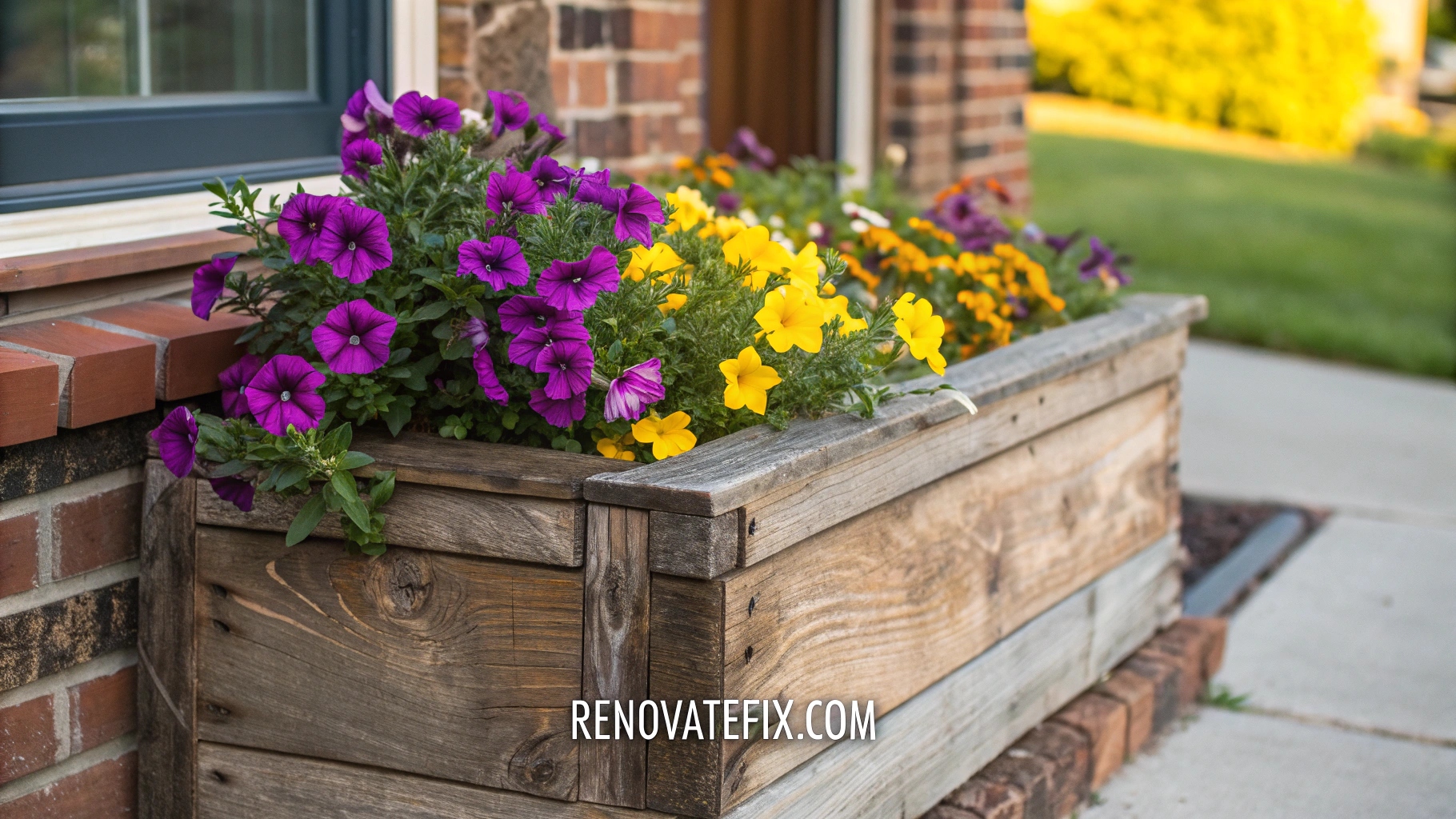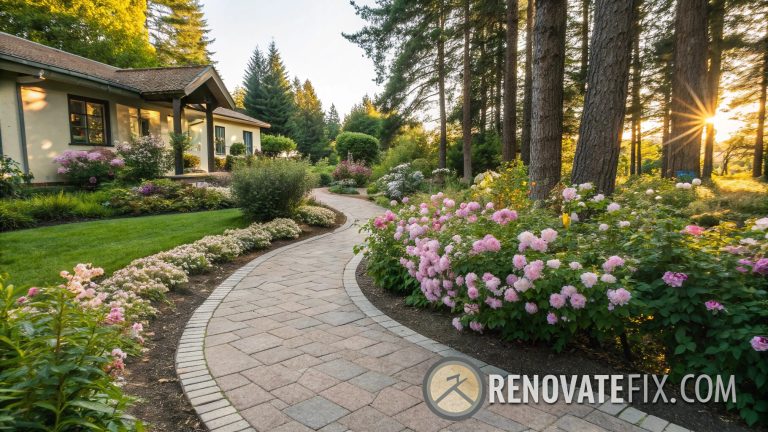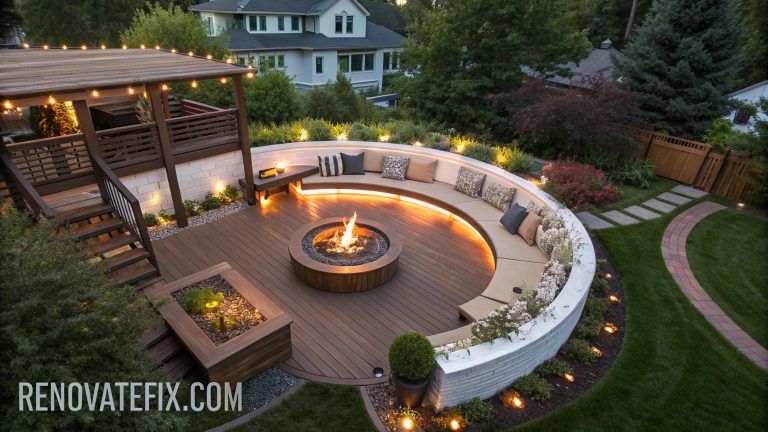Stunning Corner Flower Bed Ideas to Maximize Awkward Garden Spaces
Every garden has those tricky corners – awkward spaces where traditional landscaping falls short.
Yet these neglected nooks offer prime opportunities for creating eye-catching focal points in your outdoor sanctuary.
Corner flower beds allow you to utilize often-wasted spaces while adding charm and character to your property.
Whether you’re working with a compact urban garden or an expansive rural landscape, thoughtfully designed corner plantings can dramatically elevate your yard’s visual appeal.
This collection of 15 corner flower bed ideas provides inspiration for various styles, budgets, and maintenance levels, helping you turn problematic angles into gorgeous garden features that will impress neighbors and provide years of botanical enjoyment.
1. Tiered Stone Corner Display
A multi-level stone arrangement creates visual intrigue while maximizing planting space in awkward angles.
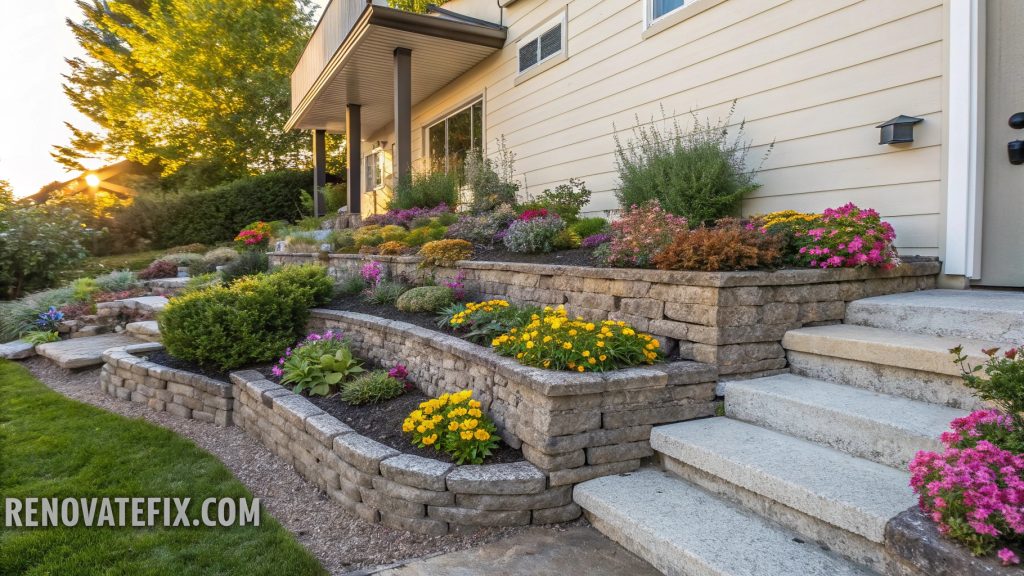
Stack various sized natural rocks or manufactured blocks in graduating heights, forming pocket spaces for different plant varieties.
This approach accommodates shallow-rooted specimens at upper tiers with deeper soil requirements below.
Fill various levels with contrasting textures – cascading flowers atop, sturdy perennials mid-level, and robust shrubs anchoring the base – producing a lush ecosystem that evolves beautifully through changing seasons while maintaining structural integrity year-round.
2. Raised Wooden Box Corner
Constructing elevated wooden containers offers practical solutions for awkward yard spaces while adding architectural elements.
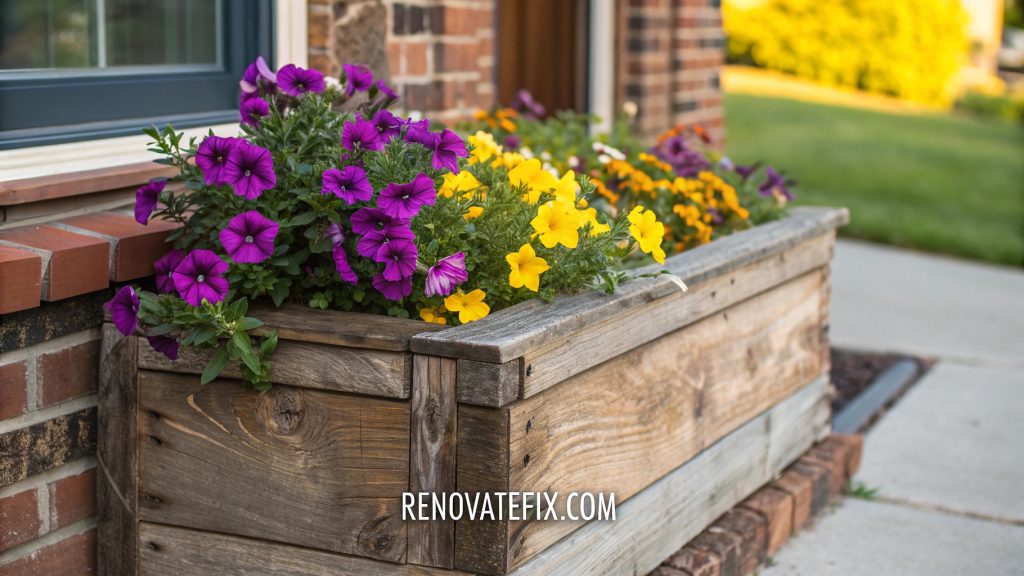
Choose weather-resistant cedar or pressure-treated lumber to build angular boxes that precisely fit your corner dimensions.
Raised positioning prevents soil compaction, improves drainage, deters certain pests, and makes gardening more accessible for those with mobility considerations.
Paint or stain wooden surfaces to coordinate with existing outdoor furniture, creating coherent aesthetic flow throughout your landscape design.
3. Native Wildflower Corner Pocket
Establishing indigenous blooms supports local pollinators while creating maintenance-friendly garden spots requiring minimal intervention.
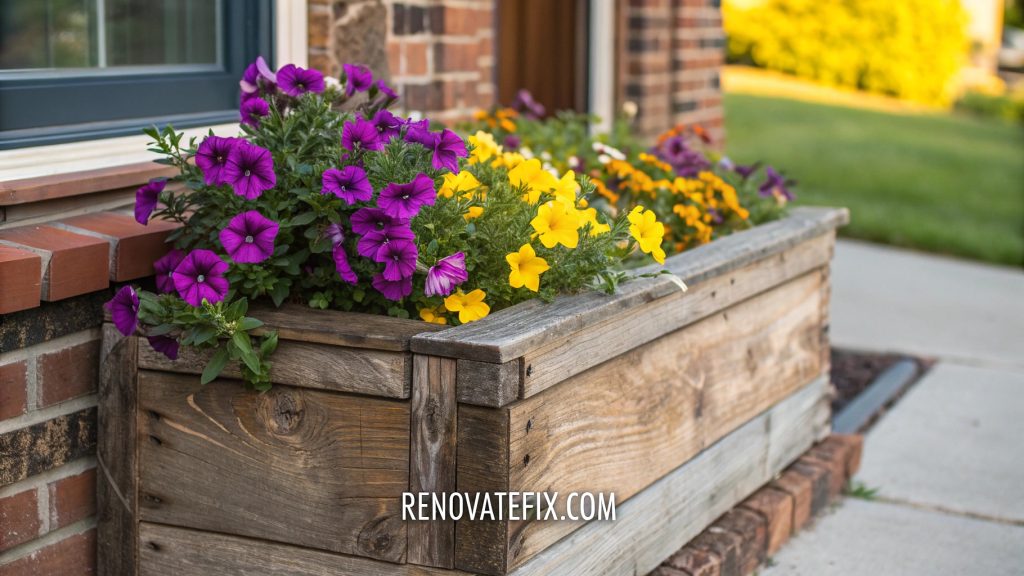
Research varieties native to your specific region, selecting species adapted to local climate conditions and soil compositions.
Group plants according to similar water requirements, arranging taller specimens toward back angles with gradually shorter blooms radiating outward.
This naturalistic approach creates informal beauty that evolves throughout growing cycles while offering crucial habitat for beneficial insects and birds.
4. Vertical Corner Trellis Garden
Utilizing vertical space maximizes growing potential while creating dramatic visual impact against fences or walls.
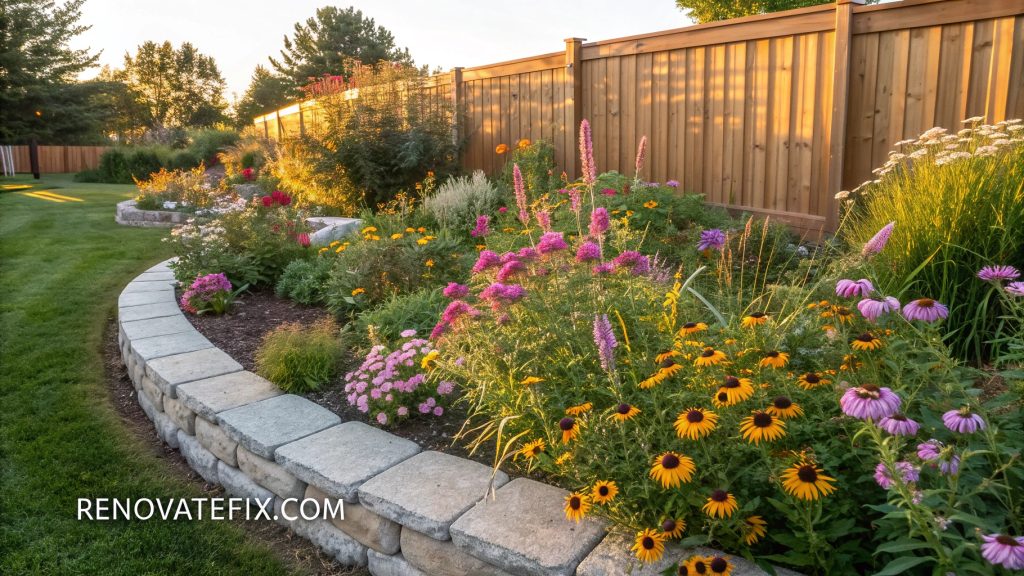
Install sturdy lattice structures, allowing climbing plants to ascend toward sunlight instead of sprawling horizontally.
Select flowering vines like clematis, morning glories or climbing roses alongside edible options such as cucumbers or runner beans for beautiful yet productive spaces.
This approach works particularly well for compact yards where ground-level planting area remains limited.
5. Drought-Resistant Gravel Corner
Creating water-wise spaces reduces maintenance demands while remaining environmentally conscious during increasingly dry seasons.
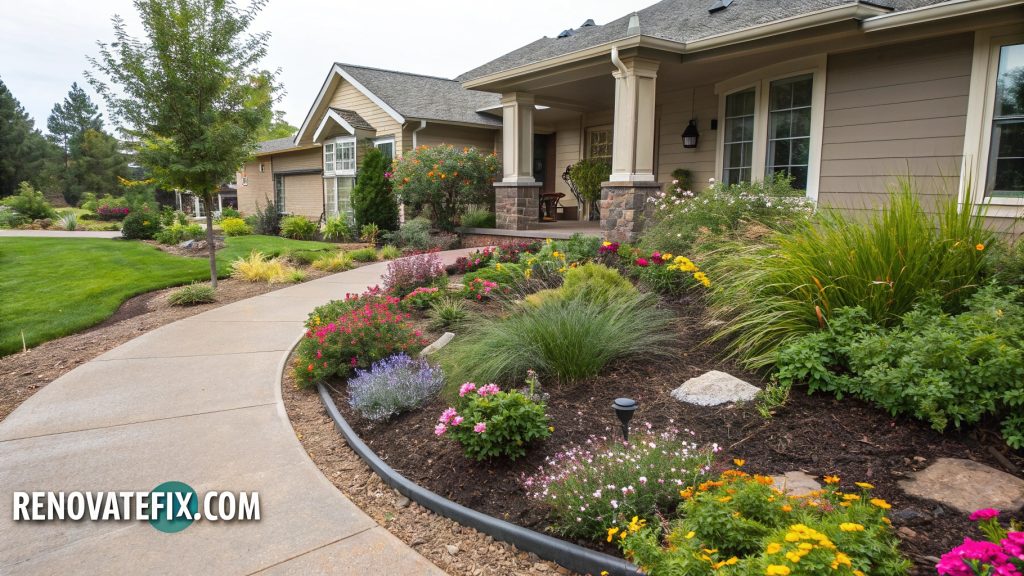
Prepare areas with proper drainage layers using varying sizes of stones beneath decorative surface gravels.
Select succulents, ornamental grasses and xeriscape-friendly flowering perennials that thrive with minimal irrigation once established.
Arrange architectural plants with distinctive silhouettes to create living sculptures that maintain visual interest through winter months when other garden areas appear dormant.
6. Curved Border Corner Planting
Softening angular junctions with flowing lines creates visually pleasing transitions between different garden zones.
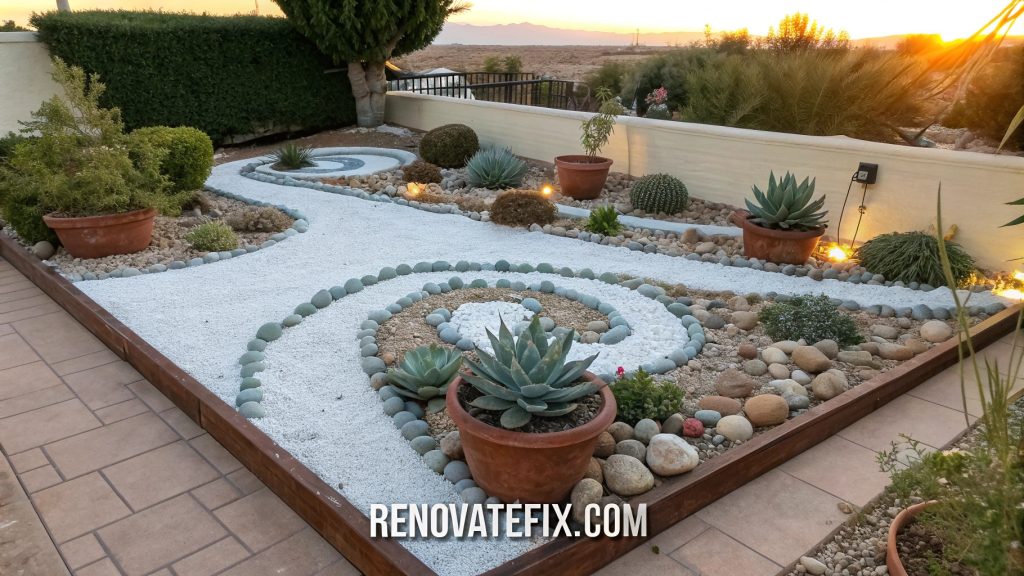
Outline graceful curved edges using flexible garden edging materials or strategically placed stones.
Plant graduated heights with tallest varieties positioned at apex points gradually decreasing toward outer edges.
Select colorful blooms with staggered flowering periods ensuring continual visual interest throughout growing seasons.
This approach visually expands perceived space while drawing attention away from stark architectural corners.
7. Butterfly Attraction Corner
Fashioning specialized habitat areas supports crucial pollinator populations while creating vibrant garden displays teeming with activity.
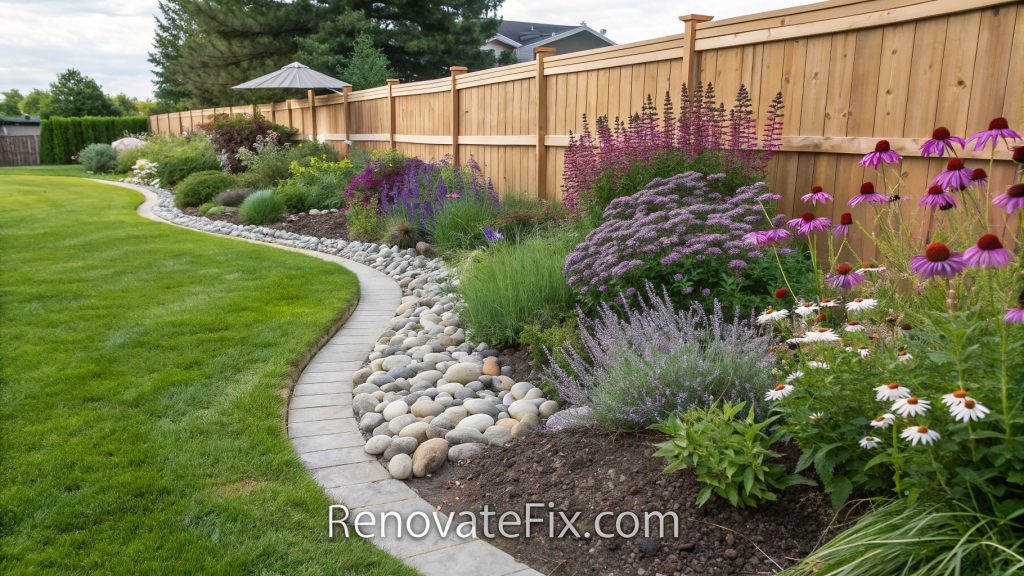
Research regional butterfly species, selecting host plants supporting caterpillar development alongside nectar-rich blooms for adult feeding.
Position flat rocks for basking spots where butterflies warm wings during cooler mornings.
Create shallow puddling areas providing minerals necessary for butterfly health. This purposeful approach combines ecological benefits with mesmerizing movement and color throughout warm months.
8. Woodland Shade Corner Retreat
Adapting challenging low-light situations creates magical havens showcasing understory plants that struggle in sunny locations.

Layer various ferns beneath partial tree canopies, interspersing shade-loving perennials like hostas, astilbe and bleeding hearts.
Add moss-covered logs or weathered stumps creating natural woodland aesthetics while providing habitat for beneficial organisms.
This approach turns difficult growing conditions into immersive sensory experiences reminiscent of forest floors with dappled light playing across varied foliage textures.
9. Rock Garden Alpine Corner
Establishing miniature mountain-inspired landscapes showcases diminutive yet tough plants thriving in seemingly inhospitable conditions.
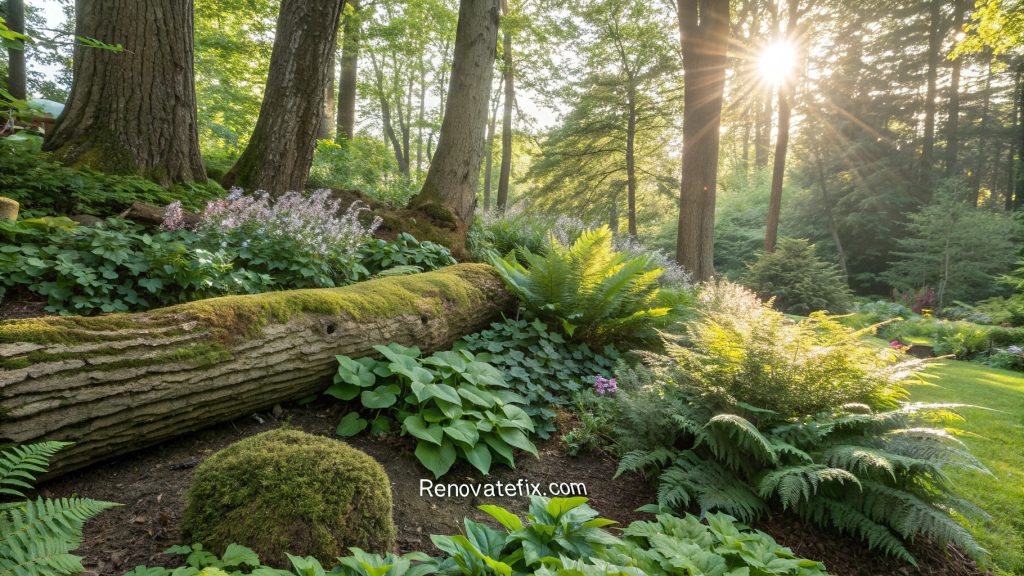
Position weather-worn stones creating natural-looking outcroppings with pockets for shallow-rooted alpine species accustomed to excellent drainage.
Select sedums, saxifrages, dwarf conifers and tiny flowering bulbs that maintain compact growth habits without overwhelming neighboring specimens.
This approach packs remarkable biodiversity into limited spaces while providing fascinating details for close observation throughout changing seasons.
10. Rain Garden Corner Collection
Converting problematic wet areas into functional ecosystems manages stormwater while supporting moisture-loving plants.
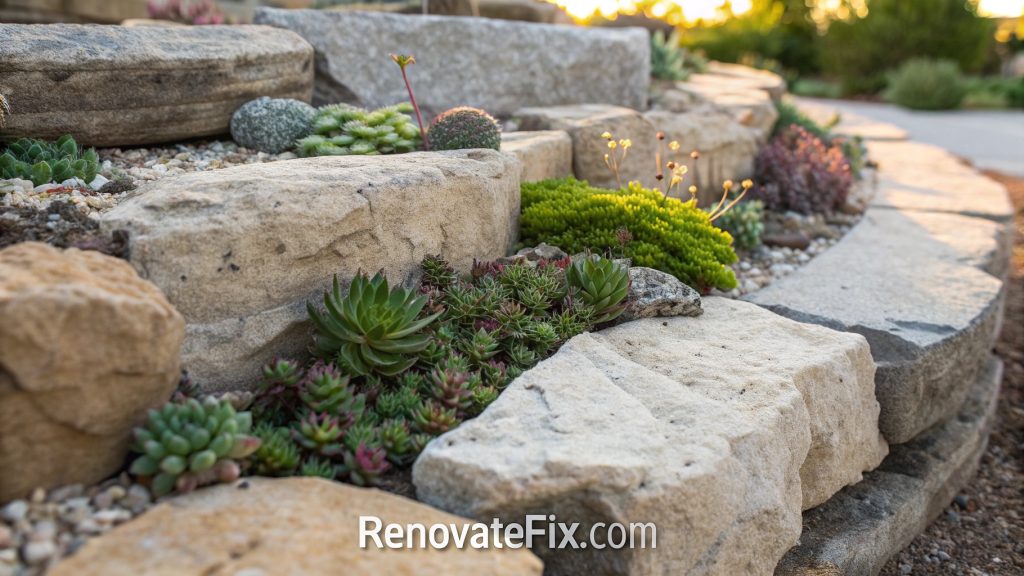
Excavate slight depressions where runoff naturally collects, amending soil for improved percolation while maintaining adequate moisture retention.
Select rushes, cardinal flowers, irises and other water-tolerant species accustomed to periodic saturation followed by drier periods.
This practical approach addresses drainage issues while creating beautiful rain gardens functioning as natural water filtration systems.
11. Aromatic Herb Corner Cluster
Growing fragrant culinary plants near pathways or seating areas stimulates multiple senses while providing fresh ingredients for cooking enthusiasts.
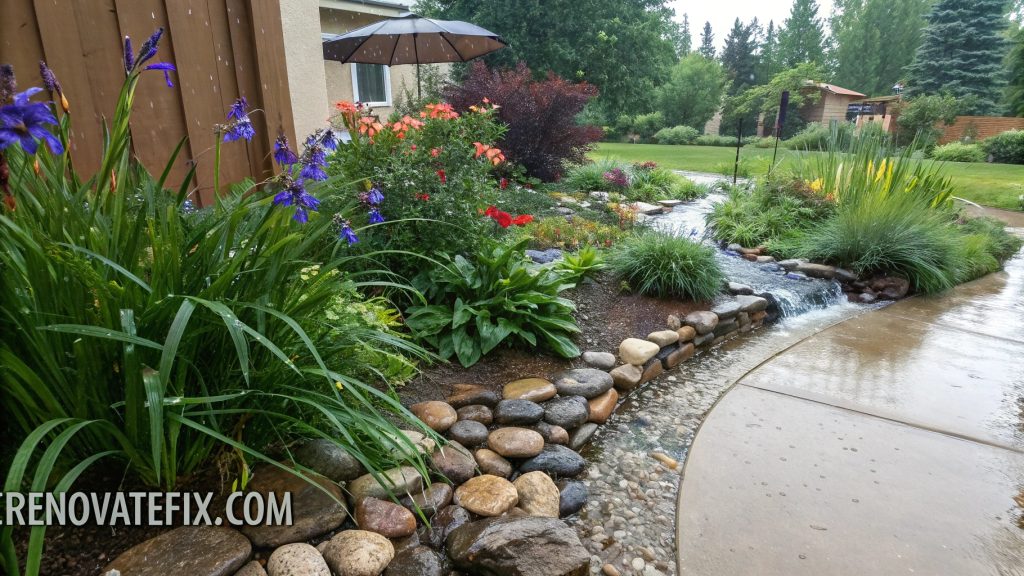
Group Mediterranean herbs requiring similar growing conditions – rosemary, thyme, sage and lavender flourish with excellent drainage and full sunlight exposure.
Position taller woody herbs toward back angles with gradually shorter varieties radiating outward for convenient harvesting access.
This practical approach combines ornamental value with functional benefits, releasing delightful scents when brushed against.
12. Four-Season Corner Structure
Planning for year-round visual interest ensures garden spaces remain attractive beyond brief flowering periods.
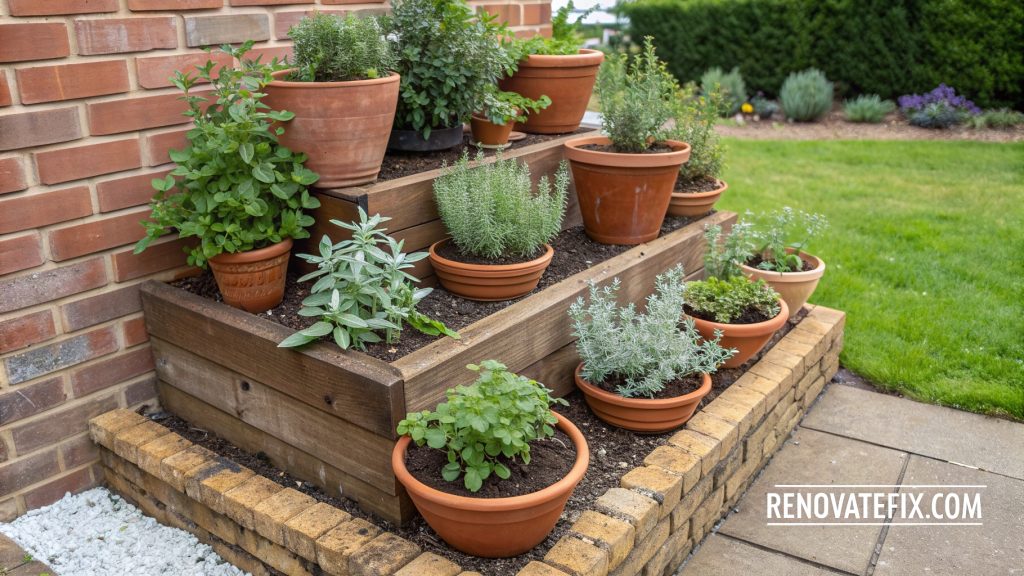
Choose foundation plants maintaining architectural presence through winter – dwarf evergreens, ornamental grasses with persistent seedheads, and shrubs with colorful bark or interesting branching patterns.
Underplant structural elements with bulbs emerging in spring, perennials blooming summer through fall, and ground covers providing consistent coverage between showier specimens.
This thoughtful approach prevents barren winter landscapes while creating framework for revolving seasonal displays.
13. Upcycled Container Corner Arrangement
Repurposing unconventional objects creates eclectic garden displays while promoting sustainability through creative reuse.
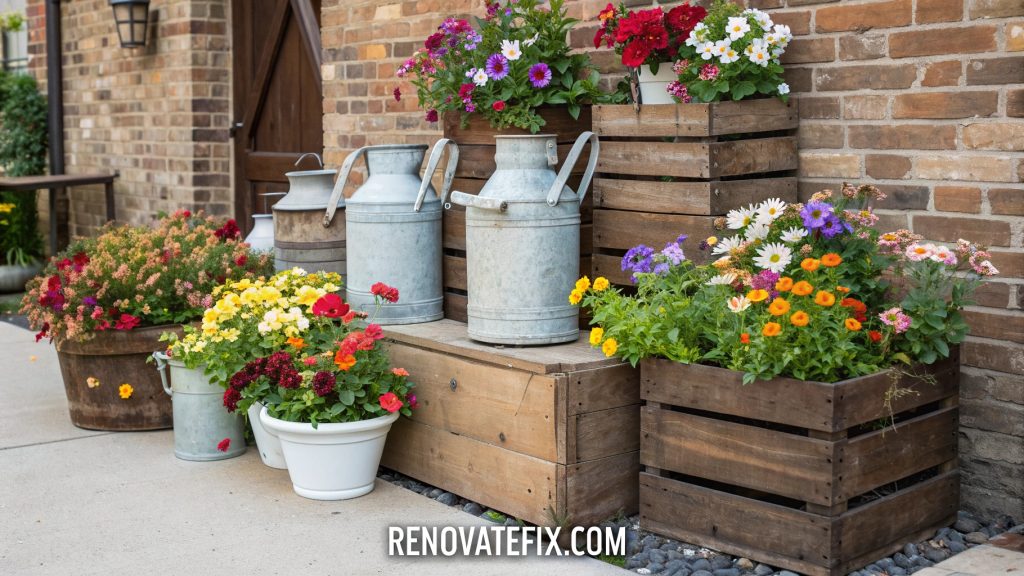
Collect vintage wheelbarrows, old watering cans, worn boots, or rustic wooden crates grouping them at various heights using bricks or upturned pots.
Drill drainage holes ensuring proper water movement before filling with quality potting mix.
Select cascading plants spilling over container edges softening industrial materials while adding unexpected bursts of color throughout groupings.
This approach infuses personality while maintaining flexibility for seasonal rearrangement.
14. Night-Blooming Corner Moonlight Garden
Creating evening-focused planting areas extends garden enjoyment beyond daylight hours, providing magical spaces for twilight appreciation.
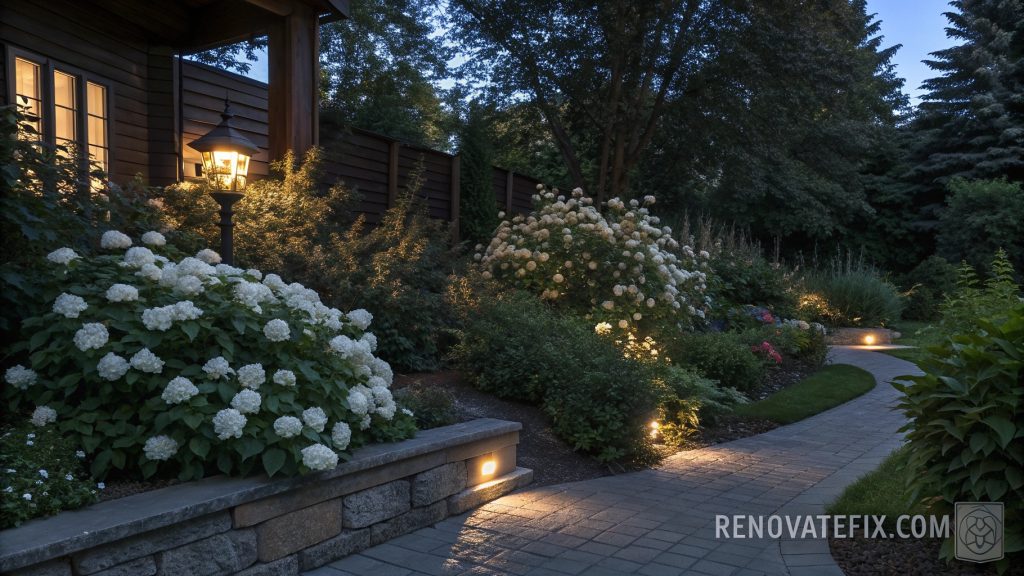
Select white-flowering plants reflecting available moonlight – nicotiana, evening primrose, moonflower vines and white-variegated foliage.
Add fragrant varieties releasing stronger scents after sunset attracting fascinating nocturnal pollinators like moths.
This specialized approach transforms ordinary corners into extraordinary nighttime destinations perfect for unwinding after busy days.
15. Edible Corner Food Garden
Maximizing growing space provides fresh produce while creating attractive landscape features combining beauty with functionality.
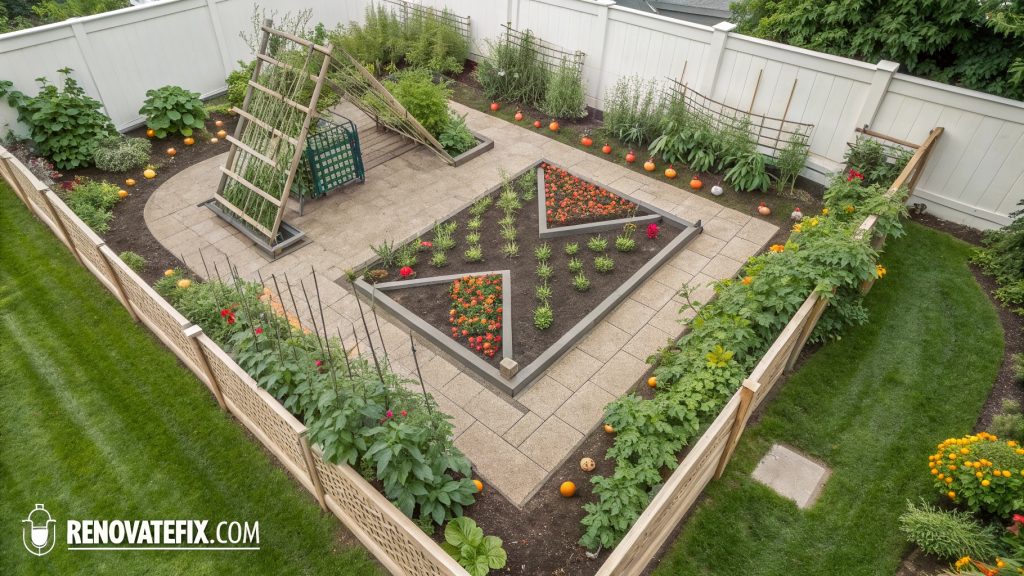
Construct keyhole-shaped raised beds allowing access from all sides without stepping on cultivated soil.
Plant vegetables according to height with trellised crops (tomatoes, peas, beans) positioned at back angles gradually decreasing to ground-hugging strawberries or herbs along forward edges.
Intersperse edible flowers like nasturtiums and calendula adding splashes of color among productive plants. This practical approach harnesses awkward spaces for nutritional benefits.
Conclusion
Corner flower beds represent perfect opportunities to express creativity while solving common garden challenges.
These often-overlooked spaces can be transformed from awkward afterthoughts into captivating focal points with thoughtful planning and appropriate plant selection.
Whether you prefer structured formality or wild naturalistic approaches, there’s a corner solution perfectly suited to your aesthetic preferences, maintenance capacity, and growing conditions.
By implementing any of these 15 corner flower bed ideas, you’ll discover newfound appreciation for those previously problematic angles.
Remember that successful gardens evolve gradually – start with proper soil preparation, select appropriate plants for your specific microclimate, and allow time for your corner creation to mature into its full potential.
With patience and care, those challenging corners will become your landscape’s most distinctive and cherished features.

